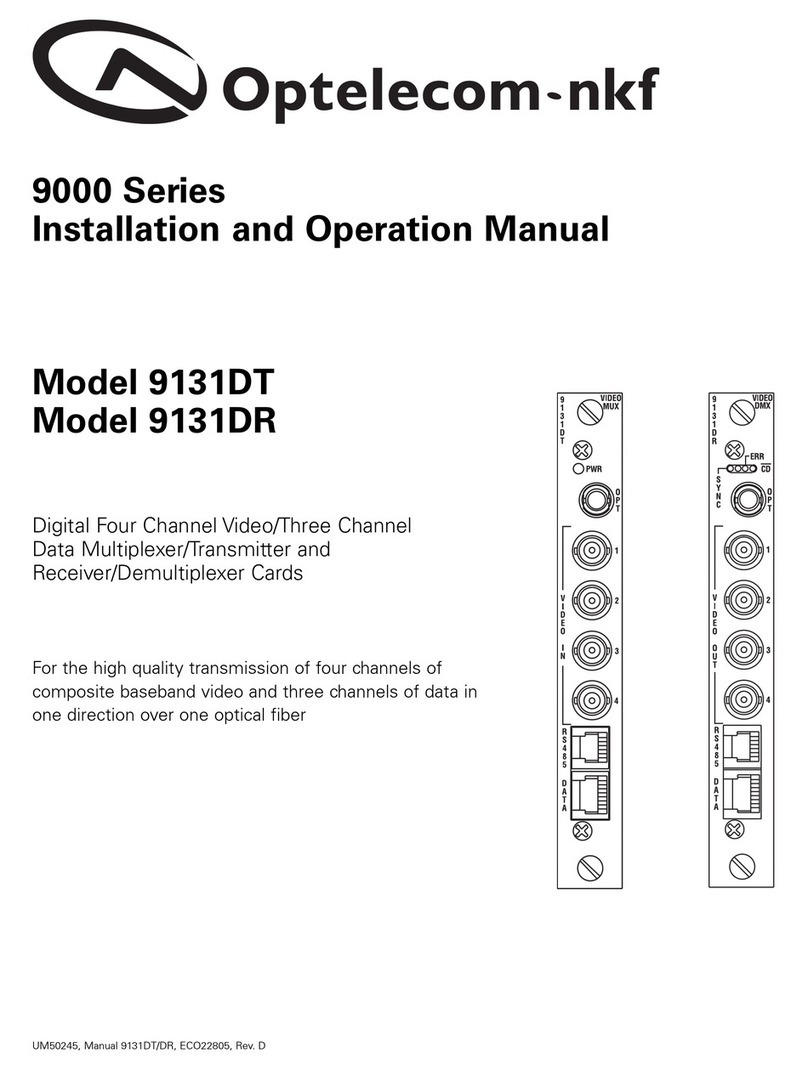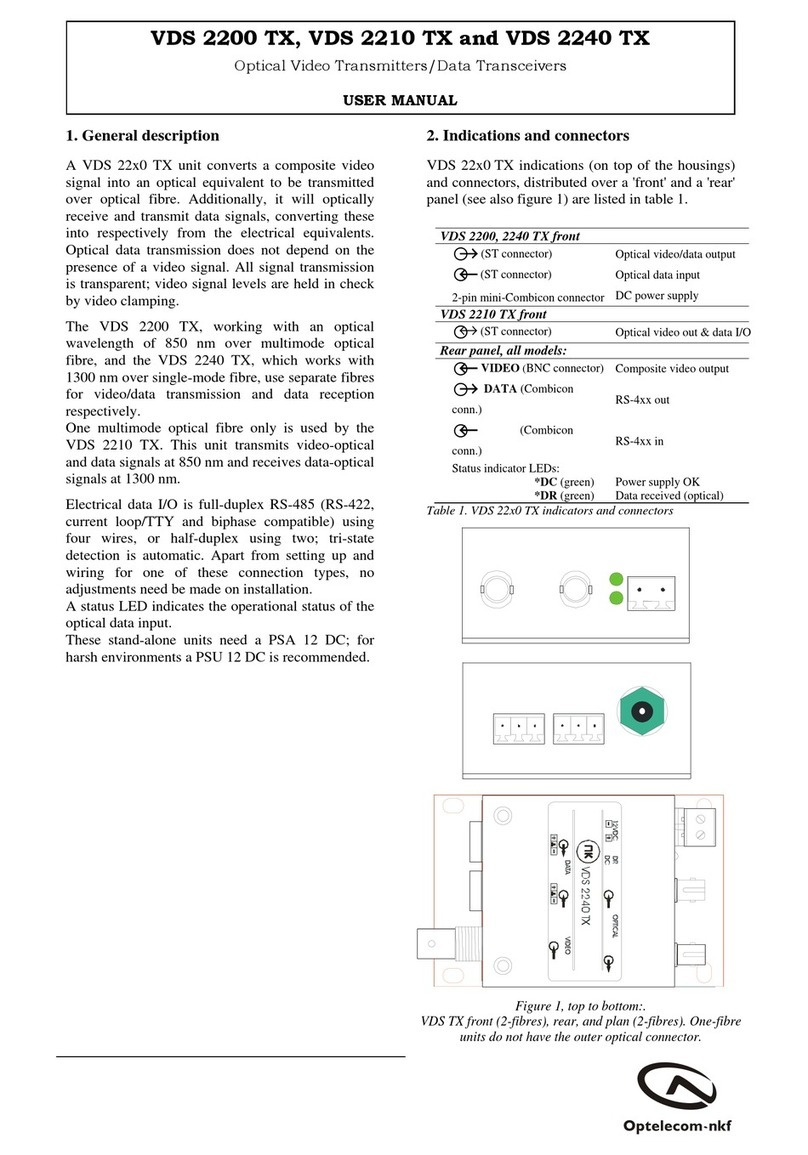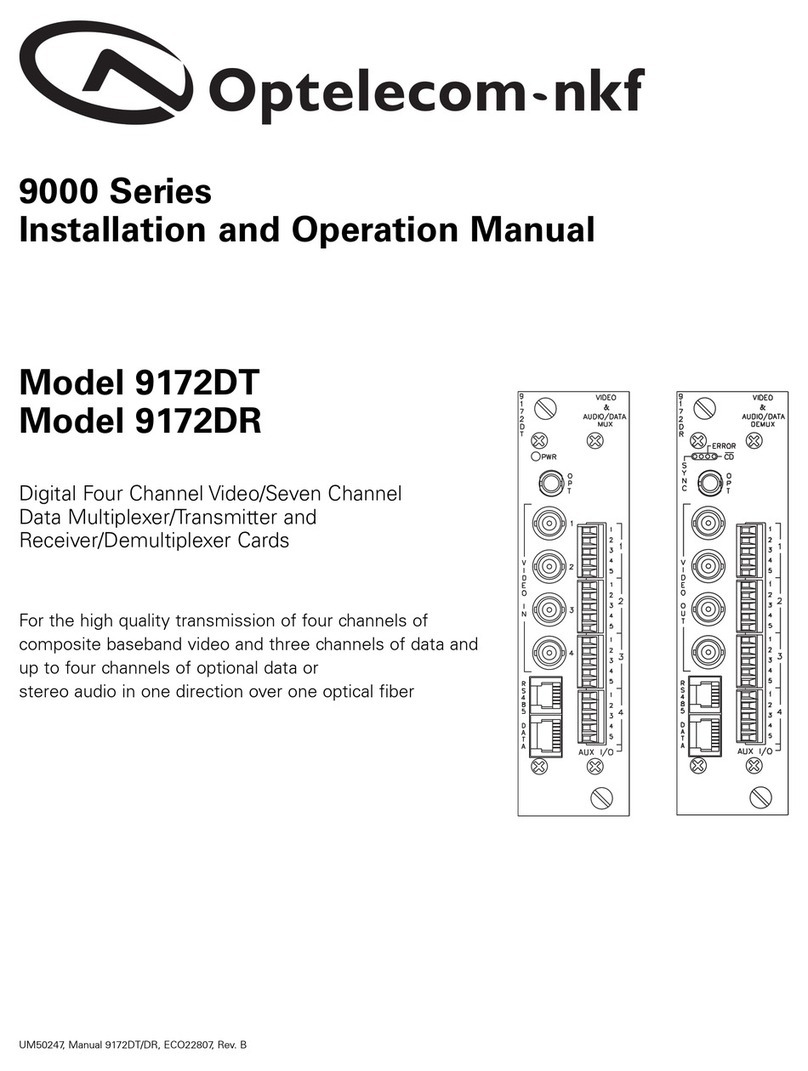iv
Sicherheitsanleitungen RM-1
Die optischen Vorrichtungen in diesem Gerät haben Gefahrenstufe 1M. Wie vorgeschrieben durch IEC60825-1 ist der Installateur dafür verantwortlich,
sicherzustellen, dass die unten abgebildeten Schilder an den Orten mit eingeschränktem Zugang, an denen dieses Gerät aufgestellt ist, vorhanden sind.
Diese Baugruppe enthält Teile, die durch elektrostatische Entladungen (ESD) beschädigt werden können. Vorsichtsmaßnahmen
zum Schutz vor elektrostatischer Entladung treffen, wenn Teile oder Baugruppen berührt, ausgebaut oder eingefügt werden.
Das Gestell, in dem diese Einheit eingebaut ist, muss in einem entsprechend klassifizierten NEMA-Schutzgehäuse untergebracht
sein.
Wenn diese Einheit bei besonders hohen Temperaturen betrieben wird, können interne und externe Metallflächen extrem heiß
werden. Es muss darauf geachtet werden, dass diese Einheit in einem Bereich mit eingeschränktem Zugang aufgestellt wird,
damit nur geschultes Wartungspersonal Zugang zur Einheit hat.
Dieses Produkt enthält Laser oder LEDs der Klasse 1M.
• Laserprodukt der Klasse 1M gemäß IEC60825-1:1993+A1+A2
•VORSICHT: Wenn die Bedienungselemente anders als hier beschrieben bzw. andere Einstellungen verwendet werden,
kann es zu schädlicher Strahlenaussetzung kommen.
• Es müssen Vorsichtsmaßnahmen getroffen werden, um Aussetzung an optischer Strahlung zu vermeiden, wenn die Einheit
aus dem Gehäuse genommen oder die Faseroptik von der Einheit getrennt wird.
• In einer Faseroptik-Verbindung dieser Einheit kann auch dann Laserstrahlung vorhanden sein, wenn die Stromversorgung
zur Einheit abgeschaltet wurde.
• Diese Einheit ist zum Einbau an Orten vorgesehen, an denen nur geschultes Personal Zugang zu den Faseroptik-
Verbindungen hat.
• Die Lage aller optischen Verbindungen ist im Abschnitt über die Lage von Anschlüssen und Funktionsweise dieses
Handbuchs zu finden.
• Optische Ausgänge und Wellenlängen sind im Abschnitt mit den technischen Daten dieses Handbuchs zu finden.
Die in diesem abschnitt und auf anderen seiten dieses handbuchs enthaltenen sicherheitsinformationen müssen befolgt werden, wenn diese einheit betrieben,
gewartet oder repariert wird. Falls vorsichtsmassnahmen, warnungen oder anweisungen in diesem handbuch nicht befolgt werden, verstösst dies gegen die
konstruktions, und herstellungsstandards und erfolgt im gegensatz zum vorgesehenen verwendungszweck dieser einheit. Optelecom-NKF übernimmt keine
haftung für das verabsäumnis des kunden, diese sicherheitsanforderungen einzuhalten.
LASER-STRAHLUNG
NICHT DIREKT MIT OPTISCHEN INSTRUMENTEN (LUPEN) ANSEHEN
LASER-PRODUKT DER KLASSE 1M
VORSICHT:
ABGEKLEMMTE OPTISCHE STECKVERBINDER KÖNNEN OPTISCHE ENERGIE FREI SETZEN
NICHT MIT OPTISCHEN INSTRUMENTEN (LUPEN) IN DEN STRAHL BLICKEN.






























